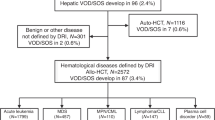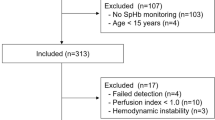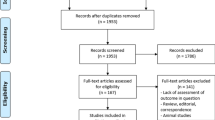Abstract
Hepatic regimen-related toxicity (RRT) is a serious complication of stem cell transplantation. Cytokine activation may be involved in the pathogenesis. Corticosteroids are potent inhibitors of cytokine production, and, therefore could play a role in the treatment of hepatic RRT. Between January 1994 and June 1998, 28 of 782 consecutive transplant patients (3.6%) developed hepatic RRT (20 veno-occlusive disease (VOD) and eight liver dysfunction of uncertain etiology (LDUE) as defined by Seattle criteria), and were treated with high-dose methylprednisolone (MP, 500 mg/m2 i.v. every 12 h for six doses), initiated upon increase in serum total bilirubin to ⩾4 mg/dl. Other causes of liver dysfunction were excluded. Response to therapy with high-dose MP was defined as reduction in total bilirubin by 50% within 10 days of initiation of MP. Overall, 17 patients (61%) responded to treatment (12 patients with VOD, five patients with LDUE). The bilirubin in responding patients decreased from a mean of 8.6 mg/dl (range, 4–17.9) at the start of MP to 4.1 mg/dl (range, 0.5–17.9) 10 days later. There were no statistically significant differences between responders and non-responders in the day treatment with high-dose MP was initiated (P = 0.38), total serum bilirubin (P = 0.17) and percent weight gain at the time high-dose MP was started (P = 0.10) or the calculated probability of fatal outcome from VOD (18% for responders, 23% for non-responders; P = 0.30). A lower pre-transplant DLCOc was observed among non-responders (P = 0.04). At 100 days post-transplant, hepatic RRT resolved in all 13 survivors who responded to high-dose MP, and in one non-responding patient. No serious toxicities due to high-dose MP were observed. We conclude that resolution of hepatic RRT occurred in the majority of patients treated with high-dose MP in this study; however, randomized controlled trials are required to determine the efficacy of high-dose MP for treatment of hepatic RRT. Bone Marrow Transplantation (2000) 25, 737–743.
This is a preview of subscription content, access via your institution
Access options
Subscribe to this journal
Receive 12 print issues and online access
$259.00 per year
only $21.58 per issue
Buy this article
- Purchase on SpringerLink
- Instant access to full article PDF
Prices may be subject to local taxes which are calculated during checkout

Similar content being viewed by others
References
Bearman SI . The syndrome of hepatic veno-occlusive disease after marrow transplantation Blood 1995 85: 3005–3020
McDonald GB, Hinds MS, Fisher LD et al. Veno-occlusive disease of the liver and multiorgan failure after bone marrow transplantation: a cohort study of 355 patients Ann Intern Med 1993 118: 255–267
Jones RJ, Lee KSK, Beschorner WE et al. Venoocclusive disease of the liver following bone marrow transplantation Transplantation 1987 44: 778–783
McDonald GB, Sharma P, Matthews DE et al. Veno-occlusive disease of the liver after bone marrow transplantation: diagnosis, incidence and predisposing factors Hepatology 1984 4: 116–122
Shulman HM, Fisher LB, Schoch HG et al. Veno-occlusive disease of the liver after marrow transplantation: histological correlates of clinical signs and symptoms Hepatology 1994 19: 1171–1180
Deleve LD . Dacarbazine toxicity in murine liver cells: a model of hepatic endothelial injury and glutathione defense J Pharmacol Exp Ther 1994 268: 1261–1265
Shulman HM, Luk K, Deeg HJ et al. Induction of hepatic venocclusive disease in dogs Am J Pathol 1987 126: 114–125
Epstein RB, Min KW, Anderson SL, Syzek L . A canine model for hepatic venocclusive disease Transplantation 1992 54: 12–16
Geraci JP, Mariano MS, Jackson KL . Radiation hepatology of the rat: microvascular fibrosis and enhancement of liver dysfunction by diet and drugs Radiat Res 1992 129: 322–332
Teicher BA, Crawford GM, Holde SA et al. Glutathione monoethyl esther can selectively protect liver from high dose BCNU or cyclophosphamide Cancer 1988 62: 1275–1281
Remberger M, Ringden O . Cytokines in veno-occlusive disease of the liver after liver transplantation Transplant Proc 1995 27: 3533–3534
Holler E, Kolb HJ, Moller A et al. Increased serum levels of tumor necrosis factor-alpha precede major complications of bone marrow transplantation Blood 1990 75: 1011–1016
Gugliotta L, Catani L, Vianelli N et al. High plasma levels of tumor necrosis factor-α may be predictive of veno-occlusive disease in bone marrow transplantation Blood 1994 83: 2385–2386
Tanaka J, Imamura M, Kasai M et al. Rapid analysis of tumor necrosis factor-alpha mRNA expression during venoocclusive disease of the liver after allogeneic bone marrow transplantation Transplantation 1993 55: 430–432
Van Hinsbergh VW, Kooistra T, Van Den Berg EA et al. Tumor necrosis factor increases the production of plasminogen activator inhibitor in human endothelial cells in vitro and in rats in vivo Blood 1988 72: 1467–1473
Van der Poll T, Levi M, Büller HR, van Deventer SJ et al. Fibrinolytic response to tumor necrosis factor in healthy subjects J Exp Med 1991 174: 729–732
Salat C, Holler E, Wolf C et al. Plasminogen activator inhibitor-1 confirms the diagnosis of hepatic veno-occlusive disease in patients with hyperbilirubinemia after bone marrow transplantation Blood 1997 89: 2184–2188
Gertler JP, Abbott WM . Prothrombotic and fibrinolytic function of normal and perturbed endothelium J Surg Res 1992 52: 89–95
Nawroth PP, Stern DM . Endothelial cell procoagulation properties and the host response Semin Thromb Hemost 1987 13: 391–397
Collins PW, Gutteridge CN, O'Driscoll A et al. von Willebrand factor as a marker of endothelial cell activation following BMT Bone Marrow Transplant 1992 10: 499–506
Fajardo LF, Colby TV . Pathogenesis of veno-occlusive liver disease after radiation Arch Pathol Lab Med 1980 104: 584–588
Shulman HM, Gown AM, Nugent DJ . Hepatic veno-occlusive disease after bone marrow transplantation. Immunohistochemical identification of the material within occluded central venules Am J Pathol 1987 127: 549–558
Shulman HM, McDonald GB, Matthews D et al. An analysis of hepatic veno-occlusive disease and centrilobular hepatic degeneration following bone marrow transplantation Gastroenterology 1980 79: 1178–1191
Heikinheimo M, Halila R, Fasth A . Serum procollagen type III is an early and sensitive marker for veno-occlusive disease of the liver in children undergoing bone marrow transplantation Blood 1994 83: 3036–3040
McDonald GB . Venoocclusive disease of the liver following marrow transplantation Marrow Transplant Rev 1994 3: 129–134
Bearman SI, Shuhart MC, Hinds MS, McDonald GB . Recombinant human tissue plasminogen activator for the treatment of established severe venocclusive disease of the liver after bone marrow transplantation Blood 1992 80: 2458–2462
Bearman SI, Lee JL, Baron AE, McDonald GB . Treatment of hepatic venocclusive disease with recombinant human tissue plasminogen activator and heparin in 42 marrow transplant patients Blood 1997 89: 1501–1506
Almawi W, Beyhum H, Rahme A, Rieder M . Regulation of cytokine and cytokine receptor expression by glucocorticoids J Leuk Biol 1996 60: 563–572
Cato AC, Wade E . Molecular mechanisms of anti-inflammatory action of glucocorticoids Bioassays 1996 18: 371–378
Bearman SI, Anderson GL, Mori M et al. Venoocclusive disease of the liver: development of a model for predicting fatal outcome after marrow transplantation J Clin Oncol 1993 11: 1729–1736
Attal M, Huguet F, Rubie H et al. Prevention of hepatic veno-occlusive disease after bone marrow transplantation by continuous infusion of low-dose heparin: a prospective randomized trial Blood 1992 79: 2834–2840
Goyal RK, Wall DA, Yu LC . Identification of patients with hepatic venoocclusive disease likely to respond to r-tPA therapy Blood 1993 10: 632 (Abstr.)
Schriber J, Christianen N, Baer MR et al. Tissue plasminogen activator as therapy for hepatotoxicity following bone marrow transplantation Blood 1995 86: 220 (Abstr.)
Carreras E, Granena A, Navasa M et al. On the reliability of clinical criteria for the diagnosis of hepatic veno-occlusive disease Ann Hematol 1993 66: 77–80
Blostein MD, Thiebeault Apaltiel OB, Rybka WB . A comparison of clinical criteria for the diagnosis of veno-occlusive disease of the liver after bone marrow transplantation Blood 1991 78: 240 (Abstr.)
Matute-Bello G, McDonald GD, Hinds MS et al. Association of pulmonary function testing abnormalities and severe veno-occlusive disease of the liver after marrow transplantation Bone Marrow Transplant 1998 21: 1125–1130
Miniero R, Vassallo E, Soldano S et al. Management of hepatic veno-occlusive disease in pediatric patients: retrospective analysis in six AIEOP-BMT centers Bone Marrow Transplant 1996 18: (Suppl. 2) 157–159
Carreras E, Betz H, Arcese W et al. Incidence of hepatic veno-occlusive disease after blood or marrow transplantation: a prospective cohort study of the EBMT Blood 1998 92: 3599–3604
Richardson PG, Elias AD, Krishnan A et al. Treatment of severe VOD with defibrotide: compassionate use results in response without significant toxicity in a high-risk population Blood 1998 92: 737–744
Schlitt HJ, Tishler JH, Binge B et al. Allogeneic liver transplantation for hepatic veno-occlusive disease after bone marrow transplantation-clinical and immunological considerations Bone Marrow Transplant 1995 16: 473–478
Rappaport AP, Doyle HR, Starzl T et al. Orthotopic liver transplantation for life-threatening veno-occlusive disease of the liver after allogeneic bone marrow transplant Bone Marrow Transplant 1991 8: 421–424
Murray JA, LaBreque DR, Gingrich RD et al. Successful treatment of hepatic veno-occlusive disease in a bone marrow transplant patient with side-to-side portacaval shunt Gastrenterology 1987 92: 1073–1077
Jacobson BK, Kalayoglu M . Effective early treatment of hepatic veno-occlusive disease with a central splenorenal shunt in an infant J Pediatr Surg 1992 27: 531–533
Smith OF, Johnson MS, Scherer LR et al. Transjugular intrahepatic portosystemic shunting for treatment of severe hepatic veno-occlusive disease Bone Marrow Transplant 1996 18: 643–646
De la Rubia J, Carral A, Montes H et al. Successful treatment of hepatic veno-occlusive disease in a peripheral blood progenitor cell transplant patient with a transjugular intrahepatic portosystemic stent-shunt Haematologica 1996 81: 536–539
Levy V, Azoulay D, Rio B et al. Successful treatment of severe hepatic veno-occlusive disease after allogeneic bone marrow transplantation by transjugular intrahepatic portosystemic stent-shunt Bone Marrow Transplant 1996 18: 443–445
Author information
Authors and Affiliations
Rights and permissions
About this article
Cite this article
Khoury, H., Adkins, D., Brown, R. et al. Does early treatment with high-dose methylprednisolone alter the course of hepatic regimen-related toxicity?. Bone Marrow Transplant 25, 737–743 (2000). https://doi.org/10.1038/sj.bmt.1702209
Received:
Accepted:
Published:
Issue date:
DOI: https://doi.org/10.1038/sj.bmt.1702209
Keywords
This article is cited by
-
High-dose methylprednisolone for the treatment of sinusoidal obstruction syndrome in adults
Bone Marrow Transplantation (2018)
-
Successful treatment of hepatic veno-occlusive disease after myeloablative allogeneic hematopoietic stem cell transplantation by early administration of a short course of methylprednisolone
Bone Marrow Transplantation (2008)
-
Is there a role for high-dose methylprednisolone in the treatment of hepatic regimen-related toxicity?
Bone Marrow Transplantation (2006)
-
Demonstration of reversed flow in segmental branches of the portal vein with hand-held color Doppler ultrasonography after hematopoietic stem cell transplantation
Bone Marrow Transplantation (2005)
-
Proinflammatory cytokines and their role in the development of major transplant-related complications in the early phase after allogeneic bone marrow transplantation
Leukemia (2003)



